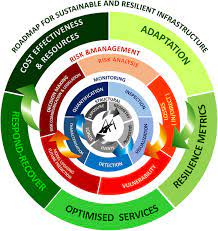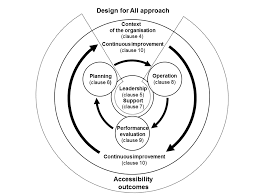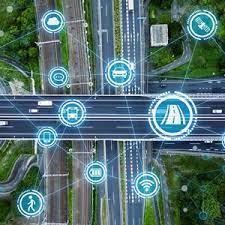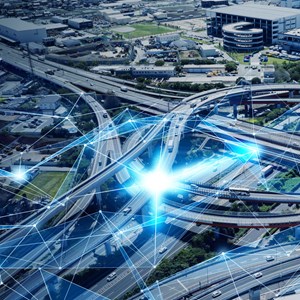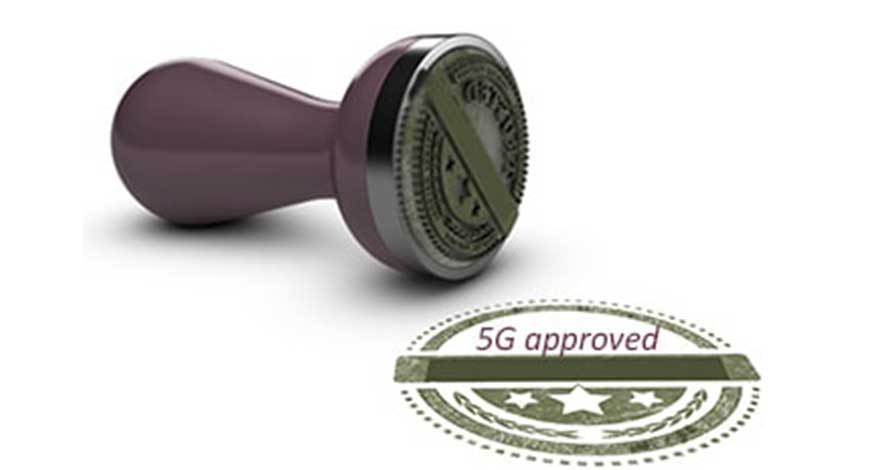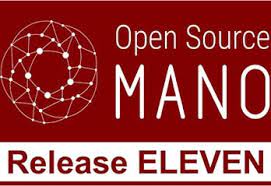COP26: A New Policy Paper Highlights the Contribution of Standards to the Fight Against Climate Change
On the occasion of COP26, CEN and CENELEC released the new policy paper “Uniting the world to tackle climate change: COP26 and the commitments of European Standards”. In the document, the two European Standardization Organizations reaffirm their commitment to contributing to the fight against climate change and raise awareness on the actions they are taking to contribute to addressing these challenges.
In particular, the policy paper highlights the role of standards in contributing to the green transition: “Standards foster the process of innovation and encourage the faster development of more environmentally friendly technologies and materials. Whether it is by specifying tests or providing robust definitions that avoid misleading environmental claims, standards have a key role to play in addressing the climate emergency.”
Based on this potential, the standardization community stands ready to play their part in ensuring that both Europe and the world are equipped to deliver the social and economic transition necessary to reduce the effects of climate change, while also helping to deliver the infrastructure necessary to increase the planet’s resilience to adapt to its impacts. The full text of the Policy Paper is available here.
The functioning of society depends on the transportation of goods and persons. The infrastructure required to enable transportation is built to ensure that this can happen safely and smoothly, providing specified high levels of service. As Europe has already experienced on many occasions, reductions in service due to potentially disruptive events, such as floods, earthquakes, heavy snow falls, fog, high winds, or cyberattacks can have significant societal consequences.
In this context, transport infrastructure managers must minimize the impact and potential consequences of these disruptive events. To do so, objective information on the service provided by their transport infrastructure and its resilience to external adverse events is necessary. In order to help them acquire this information, in November CEN and CENELEC published new CWA 17819:2021 'Guidelines for the assessment of resilience of transport infrastructure to potentially disruptive events'. This document provides managers with guidance to proceed a complete and systematic definition of service and measure resilience, in all situations with which the manager is confronted, and to help identify the suitable interventions to enhance such resilience.
CWA 17819:2021 is freely available for download here. It was developed by CEN/CLC/WS 018 ‘Assessment of the resilience of transport infrastructure to potentially disruptive events’, whose Secretariat is held by UNE, Spain’s National Standardization Institute.
Bureau of Indian Standards (BIS), national standard development body of India, has published Indian Standard IS 17802-"Accessibility for ICT Products and Services, Part 1: Requirements" which is a technical adoption of European Standard EN 301 549 v3.2.1 as developed by CEN, CENELEC and ETSI. Modifications to Indian Standards have been made to adapt it to India and are limited to referencing the relevant regulatory context (Rights of Persons with Disabilities Act, 2016) and the official languages of India. Part-2 for this Indian Standards published, to determine the conformity assessment is under formulation at BIS.
To accelerate the development of alternative fuels, multifuel stations integration is fundamental. CEN and CENELEC developed the new Guide 38 to facilitate the integration of alternative fuels at existing fueling stations and to give guidance to design, authorize and operate new multifuel stations in support of the Directive 2014/94/EU on the deployment of alternative fuels infrastructure and of the future Regulation replacing the directive. This CEN and CENELEC Guide also considers other legislations impacting multifuel stations (ATEX, PED, MID).
This new Guide is the result of a brilliant collaborative work led in the Working Group "Multifuel stations" of the CEN and CENELEC Sector Forum Gas Infrastructure, with experts of different technical committees involved in various fuels (natural gas, hydrogen, LPG). A large consultation was conducted to all the relevant CEN and CENELEC Technical Committees (CEN-CLC/JTC 6, CEN/TC 301, CLC/TC 69X, CEN/TC 268, CEN/TC 286, CEN/TC 326, CEN/TC 393, and CEN/TC 408) and coordination group (CEN-CLC/eMCG). Through Guide 38, the technical committees involved in the standardization of alternative fuels infrastructure will have a better view on how to ensure the global coherence of the integrated infrastructure when developing their respective standards.
Environmental Product Declarations (EPD) present quantified environmental information on the life cycle of a product, thus enabling comparisons between products fulfilling the same function. They are based on the Life Cycle Assessment (LCA) methodology, as described in the EN ISO 14040 series of standards. EPD promote transparency and increase awareness around the environmental impact of products. They support manufacturers in substantiating environmental claims and optimizing their supply chain and allow buyers to make informed product comparisons.
The recently published standard EN 15942:2021 'Sustainability of construction works - Environmental product declarations - Communication format business-to-business' aims at harmonizing the way in which Environmental Product Declarations are communicated in Europe. This document is applicable to all construction products and services related to buildings and construction works. It details the communication format of the information defined in the related standard EN 15804 'Sustainability of construction works – Environmental product declarations – Product category rules'.
Following its cartoon “Standards@Rail”, CEN & CENELEC conclude the European Year of Rail with a new campaign to share with the European citizens the importance of European standards in the daily life of trains and railways infrastructure.
In each video, railways experts of CEN/TC 256 ‘Railways applications’ and CLC/TC 9X ‘Electrical and electronic applications for railways’ present to the public a selection of European standard that directly contributes to a safe, efficient, and resilient railways network in Europe: from cybersecurity and wheels to driver's cab displays, aerodynamic or hydrogen refuelling. With these videos, the European citizens can better understand the role of these standards to overcome the current and future challenges met by the railways industry and operators to facilitate the everyday life of travellers and freight transport
The scope of the Workshop is to specify a common reference framework and a methodology that allow to evaluate, score, and report the Level of Competence of professionals and workers with regards to specific Areas of Expertise related to energy efficiency and sustainability at building and urban scale (TRAIN4SUSTAIN Competence Quality Standard). The TRAIN4SUSTAIN Competence Quality Standard framework can be defined as a hierarchical classification (taxonomy), structured into 5 levels, which covers the broad scope of energy efficiency and sustainability of buildings and urban areas and reflects the approaches of the most relevant sustainability certification systems at building and urban scale, including the recent Level(s) framework of core sustainability indicators issued by European Commission in October 2020. The TRAIN4SUSTAIN CQS is a living and extendible system that can evolve over time as it is able to receive new inputs for instance, new areas of expertise related to the development of construction technologies, materials, and methodologies, also fulfilling its “future-looking” mission.
he Commission has taken action to improve the cybersecurity of wireless devices available on the European market. As mobile phones, smart watches, fitness trackers and wireless toys are more and more present in our everyday life, cyber threats pose a growing risk for every consumer. The delegated act to the Radio Equipment Directive adopted today aims to make sure that all wireless devices are safe before being sold on the EU market. This act lays down new legal requirements for cybersecurity safeguards, which manufacturers will have to consider in the design and production of the concerned products. It will also protect citizens' privacy and personal data, prevent the risks of monetary fraud as well as ensure better resilience of our communication networks. The delegated act will be complemented by a Cyber Resilience Act, recently announced by President von der Leyen in the State of the Union speech, which would aim to cover more products, looking at their whole life cycle. Today's proposal as well as the upcoming Cyber Resilience Act follow up on the actions announced in the new EU Cybersecurity Strategy presented in December 2020.
ETSI DECT-2020 NR, the world’s first non-cellular 5G technology standard, has been recognized by the WP5D of the International Telecommunication Union’s Radiocommunication Sector (ITU-R) and included as part of the 5G standards in IMT-2020 technology recommendation. Dr. Günter Kleindl, Chair of the ETSI Technical Committee DECT, says: “With our traditional DECT standard we already received IMT-2000 approval by ITU-R twenty-one years ago, but the requirements for 5G were so much higher, that we had to develop a completely new, but compatible, radio standard.” Released last year, the standard sets an example of future connectivity: the infrastructure-less and autonomous, decentralized technology is designed for massive IoT networks for enterprises. It has no single points of failure and is accessible to anyone, costing only a fraction of the cellular networks both in dollars and in carbon footprint.
The IoT standard, defined in ETSI TS 103 636 series, brings 5G to the reach of everyone as it lets any enterprise set up and manage its own network autonomously with no operators anywhere in the world. It eliminates network infrastructure, and single point of failure - at a tenth of the cost in comparison to cellular solutions.
ETSI is pleased to announce OSM Release ELEVEN. Committed since its foundation to the alignment with ETSI standardization work, this release completes the adoption of two new ETSI NFV specifications, ETSI GS NFV-SOL004 and ETSI GS NFV-SOL007 for package formats. Standards adoption is part of the OSM vision to enable interoperability and a large and healthy NFV ecosystem. In addition, Release ELEVEN includes significant functional extensions in areas such as interoperability with public clouds, interaction with cloud-native environments and integration of network functions of different natures.
OSM is also aligning with the most recent market needs, by implementing the latest technologies for managing Containerized Network Functions (CNFs). This is a major differentiator in the orchestration space, and an important requirement for deploying 5G network functions and higher.







